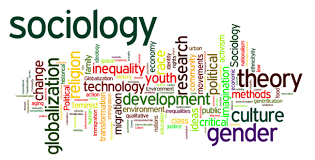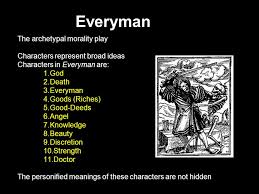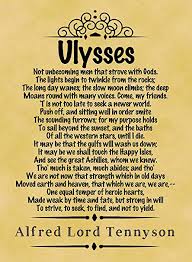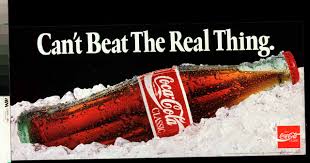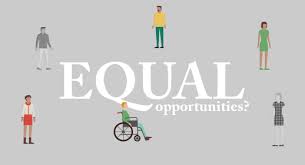
Major HR Laws Affecting Equal Opportunity
Order Instructions:
NOTE: This assignment must have an APA format cover sheet and reference page along with in text citations. The only part of the paper which does NOT have to be APA format is your write up of answers. You can simply type Scenario 1: Scenario 2: etc as shown below.
Directions: Applying your knowledge of current HR laws, the text, and other sources, (1) examine each following scenario, (2) Determine which law potentially is being violated and (3) what actions you would take as the HR manager.
Scenario 1: Roderick, an employee on the manufacturing line and a member of a new religious organization called The Rites of Spring, has informed you that he will be unable to work on Friday afternoons after 2:00 pm and will be unable to report to work before noon on Mondays. He indicated that from Friday afternoon through Monday morning he must not work, as according to the principles of The Rites of Spring. He realizes this is an inconvenience and has offered to extend his workdays on other afternoons. The facility is a 24 hour operation with 3 shifts.
Scenario 2: Adam, an African American employee in your retail operation, has filed a complaint indicating that several white coworkers, including two supervisors, are harassing him because of his race. He alleges that they call him names such as “Sambo”, “Boy”, Afrikaner,” and “Zulu.” He also indicates that his supervisor refuses to allow him to work overtime, preferring to give overtime opportunities to white employees. Adam is a solid associate with no attendance issues, and he’s always very helpful to customers. After reviewing the overtime log, you discover that each of his coworkers has averaged five hours of overtime per week.
Scenario 3: you are the HR manager for a regional construction firm based in Atlanta, Georgia. In most cases, you create ads seeking temporary construction work in various cities where projects exist. However, occasionally site supervisors place their own ads in local papers. After three phone calls from women in Tampa, Florida, objecting to a recent ad placed in that city’s newspaper, you conduct an investigation. You discover the ad placed by the Tampa, Florida site supervisor reads, “Young men wanted for construction in the Tampa area.”
Scenario 4: On a weekly basis, you hold meetings with hiring managers to review recently submitted resumes and applications. These meetings determine which candidates to bring in for an interview. One hiring manager, after reviewing a resume you handed him says, “I’m not interested in this one.” You ask him why, and he explains, “He has some personal information on here, and he’s indicated he was born in Mexico.” You remind the hiring manager that the candidate has 10 years’ experience an an MBA from a top ranked school. So far, it is the best resume you’ve seen for this particular position. The hiring manager responds, “So? I don’t want to take a chance that the wetback is illegal in this country.”
Scenario 5: Tiffany, an associate on the production line for assembling mechanical pencils, is six months’ pregnant. You have discovered that her supervisor has required Tiffany to work light duty jobs in the production office, which means she is ineligible for the incentive program. This means a potential loss to Tiffany of approximately $60 per week extra in incentive pay. When you asked the supervisor about the situation, he replied, “Are you kidding? She is 6 months pregnant. She could get hurt or something might happen to her baby. As an Hr manager, aren’t you concerned about things like that?”
Scenario 6: You are the HR manager for a national consumer-goods manufacturer with four plants spread across the country and a corporate office in Cincinnati, Ohio. Each plant has a full-time cost analyst who keeps tabs on production expenses, efficiencies, and so on. The best cost analyst, Jennifer (38 years old), is located at the LA office facility. She has been extremely successful in reducing overhead costs and has started several initiatives that have gone company wide in significantly reducing costs. An opening for cost manager, based in Cincinnati, has emerged, and the company is conducting a national search to fill this position, which will oversee all four cost analysts. Jennifer has asked to be considered. The VP of finance, to whom the cost manager position will report, does not wish to consider Jennifer. He points out that she has multiple sclerosis and, since she now has to use a walker or crutches to get around, her condition will only worsen. He feels that even though she is the most qualified candidate, he is uncertain how long she’ll be physically able of performing the essential functions of the job.
**Remember to include context from your textbook along with other sources related to this assignment. Examples of APA are under Assignments in your blackboard shell along with a helpful website for further instruction. A rubric for this assignment is located under Syllabus/Schedule content area of Bb.
SAMPLE ANSWER
Equal Opportunity: Major HR Laws Affecting Equal Opportunity
Employer and employee relationships are important in fostering achievement of organization goals. Various laws exist to ensure that employees are treated equally as they provide services in their respective organizations. Examples of these laws include the Equal Employment Opportunity laws, Equal Pay Act of 1963, and Human resource laws among many others. This paper provides insights on the laws that are being violated in various case scenarios and appropriate actions that HR managers ought to take as a remedy.
In scenario one, the HR resource law that is potential being violated is Title VI of the Civil Rights Act (CRA) of 1964. This law requires or prohibits any form of discrimination based on color, race, or religious affiliation when it comes to provision of benefits and services to employees (The U.S Equal Employment Opportunity Commission (EEOC), 2015). In this case, the request that Roderick has made should not be turned down. His religious group known as ‘The Rites of Spring’ does not allow him to report to work on Monday and Friday afternoon. To solve this problem, as a HR Manager, I will have to make adjustment so that Roderick works in other shifts on other days. Employees that do not belong or ascribe to this new religious group will work on Monday and Friday afternoon while Roderick will be required to work in other shifts. This will help solve this stalemate without discriminating the employee.
Scenario two where Adam an Africa American worker is harassed by both coworkers and supervisor is a clear demonstration of violation of the Title VII of the Civil Right Act (CRA) of 1964. This is one of the acts in the equal employment opportunity that human resource personnel’s must abide to when rendering their duties in any organization (EEOC, 2015). This law prohibits any form of harassments and unfair treatment of employees on the basis of their color, race, religion, national origin or even sex in all areas of employment from selection to retirement. This act is applied in organizations that have more than fifteen employees. In this case, it is apparent that Adam is discriminated because of his color of skin and national origin as he is called names, and denied opportunity to work overtime. As a human resource manager, I have the responsibility to ensure that such behaviors do not go on. One way is to publish the laws and make sure that all employees and supervisors are aware of these laws and abide to the same. Those that may continue to discriminate against employees such as Adam because of their national origin and color of skin will have to face disciplinary action both in the organization and in the courts. I will also ensure that all employees have equal opportunity to work overtime without discriminating others based on color or national origin so that they are all entitled to get overtime.
Scenario three case, the HR laws that are violated are the Age Discrimination in Employment Act (ADEA) of 1975. The law requires that no person is discriminated on the basis of their age. All people across the age strata have a right to benefit from any program or activity that receives assistance from the Federal government ( EEOC, 2015). Therefore, the site supervisors went against the law by advertising for the construction jobs and specifying that young men were the only eligible one to apply. Women that protested about these ads were demanding for their rights. As the HR manager of this project, what I will do to make sure that the adverts are redone so that they capture all applicants regardless of their age. Provided, the applicants have the ability and the will to execute the tasks at hand they, have the right to apply and be considered for the job opening.
In scenario four, the law that is potentially being violated is the Immigration and Reform Control Act (IRCA) of 1986. The law makes it illegal for any employer to hire an employee when they know that the employee is an alien or not eligible to work in the country. It is the duty of employers to scrutinize information about the eligibility of an individual to work in the United State to comply with the law. Therefore, in this case, despite the fact that one of the applicants had qualifications for the job, he was not eligible to work in the US because of being Mexican wetback. To solve this problem as a human resource manager, I will not recommend for the hiring of this wetback to work in USA if investigations indicate that he is not a US citizen.
Scenario 5, which is about Tiffany who is, also six month pregnant illustrates violation of the pregnancy Discrimination Act of 1978. The act prohibits any form of discrimination against employees and applicants based on childbirth, pregnancy, and related conditions (Equal Employment Opportunity, 1979). Tiffany has the obligation to work or go for a leave if she asks provided the period is predetermined. As a human resource manager, this problem can be addressed by allowing her to work in the other department as directed by the supervisor but she should be entitled to her incentives.
In scenario six, Human resource law that has a potential of being violated is the Americans With disabilities Act (ADA) of 1990. This act requires accessibility to employment, services, public facilities, telecommunications, and transportation to all persons with disabilities (The University of Alabama, 2015). Jennifer, regardless of suffering from multiple sclerosis and using walkers, she has the right to contest for the position in the organization. She has the qualifications to execute the roles and responsibilities well and therefore, her disabilities status should not be taken as an excuse to leave her out of this contest. The law protects people like her from any form of discrimination when it comes to promotion, pay, and training, providing fringe benefits, and other benefits that pertain to employment (Peetz, Gardner, Brown & Berns, 2008). Therefore, as the manager, I will ensure that Jennifer apply for the job because she is qualified.
References
Equal Employment Opportunity. (1979). Labor Law Journal, 30(2), 118-121.
Peetz, D., Gardner, M., Brown, K., & Berns, S. (2008). Workplace effects of equal employment opportunity legislation: the Australian experience. Policy Studies, 29(4), 405-419. https://www.doi:10.1080/01442870802482158
The University of Alabama. (2015). Summary of Major Equal Opportunity Laws. Retrieved from: http://eop.ua.edu/summary.html
The U.S Equal Employment Opportunity Commission. (EEOC). (2015). Federal Laws Prohibiting Job Discrimination Questions And Answers. Retrieved from: http://www.eeoc.gov/facts/qanda.html
We can write this or a similar paper for you! Simply fill the order form!






